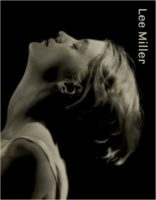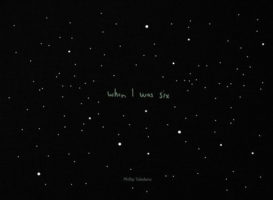It’s summer. As has become a bit of a tradition, I’m teaching photography for a couple of weeks. Consequently, these following reviews will be up for the next two weeks, and I will be back with new programming on 10 August, 2015.

Over the course of the past few years, my thinking about photography has evolved to the point where I now think that the gesture of photography is as important as the photograph itself, if not more so. With the exception of truly “found” images, photographs usually come with gestures attached. To a large extent, we base our perceptions of what we see in photographs on the attributed gestures (while at the same time pretending not to do so at all).
Needless to say, the term “gesture” might seem fuzzy, opaque even. But most of the time you take a photograph to an end, and there is a social aspect involved: you want something, whatever that might be. You might want to assert your own presence in the flow of life (the selfie — “I photograph, therefore I am.”), you might want to teach a possible audience about some facts that you think they really ought to know (photojournalism), you want to confront a possible audience with something larger that is difficult to be put into words (art photography, following the tradition of “the sublime”), or whatever else.
What we’ll have to understand is that there’s nothing really wrong with any of these actually quite separate photographic activities (sorry, selfie haters!), as long as you don’t make one the standard by which all others have to be judged. That really is the affliction a lot of discussions around photography suffer from: someone takes the rules and ideas from one area, applies them to another, very different one, only to then get terribly upset about what essentially is an artificial problem.
Given the medium photography also possesses a history, different photographic activities each also come with their own baggage. Some of them carry a lot more baggage than others, though, in particular given that the gesture of photography has the potential to be malicious. Of course, our ideas of what’s malicious evolve with time. Some things that were acceptable 50 or 100 years ago are now considered to be problematic or even outright wrong. For example, people didn’t appear to have much of a problem with having their photographs taken in the streets in the past, but that’s now changing rapidly.
As photographers, we cannot expect the medium photography to remain unchanged (I’m not speaking of technical issues here, which are actually mostly irrelevant), while the world changes around us, towards something that is better and better as time progresses (at least that’s the hope).
What this means for anyone engaged in photography is that you need to be aware of what you’re doing and how you’re doing it, given the history of your medium. As I said, some photographic activities are a lot less tainted by the past than others. If you find that what you are interested in is tainted, then you better find ways to work against that, to make sure that you’re not essentially engaging in something that is problematic. This is especially important given the nature of the gesture that comes with photography: you might be able to convince yourself that you have the best of intentions, and “you let the pictures speak for themselves,” but at the end of the day, it’s the gesture that matters. Photography has long lost its innocence, now deal with it!
If that all sounds way too theoretical for you, take a look at Eric Gottesman‘s Sudden Flowers to see what I mean. Gottesman could have just traveled to Addis Ababa to make and bring back the usual photographs so many Westerners produce there. And we, as the Western audience, could have then had discussions about such abstractions as maybe “compassion fatigue” (“why don’t these photographs move me?”) or any of the other drawers we like to place photography into when we don’t realize that we’re actually not talking about the fundamental problem.
Instead, Gottesman engaged in a long-term project, in which he worked with a collective of children who lost their parents and in which he gave the children an agency that in this larger context often is just missing. The children — the Sudden Flowers — were given Polaroid cameras and audio recorders by Gottesman, to make pictures and to talk about their dreams, aspirations, and memories.
In an obvious sense, these kinds of activities are not what Western photographers usually do in Africa, especially not when they parachute in for a few days to take some dramatic pictures. The resulting book, Sudden Flowers, is as much Gottesman’s as it is the children’s. It’s a deeply moving collection of pictures and text, which does not speak of or about this group of children. Instead, it allows them to speak for themselves. It allows them to participate in the gesture of photography. And every book comes with a unique envelope, decorated by the children.
I’d like to think that we can gain so much by seeing more photography done this way, in particular in areas of photography where the medium’s history is so complicated, where it contains so many problems. This matters not only because of the subjects — these children’s voices deserve to be heard. It also matters because such large parts of photography are stuck in a Procrustean Bed, which only allows for solutions to problems that ultimately can’t work, that don’t get us any closer to what we all feel the medium should be doing.
Recommended.
Sudden Flowers; photographs and text by Sudden Flowers/Eric Gottesman; 144 pages; Fishbar; 2014
(unrated)

Publisher Oodee maintains an ongoing series of publications entitled POV Female. Each series centers on a specific city, and each contains five books showcasing the works of five different female photographers from the city in question. After London, Tokyo, Johannesburg, and Bogota, the series’ latest installment covers Beirut. POV Female Beirut comprises books by Lamia Maria Abillama, Ayla Hibri, Randa Mirza, Caroline Tabet, and Lara Tabet.
Given that large parts of photography are still so heavily dominated by white men (from North America and Europe), the series clearly aims at shaking and opening things up. There is, after all, a lot to be gained from increasing the variety of photographic voices: not only will those previously left out because they’re not white men be given a chance to contribute, but it will also expand everybody’s horizon, enriching the medium while, at the same time, expanding our collective exposure to the world as a whole. So I really only have one complaint about the series: the edition size — 100 — is way too small. The series deserves to be seen more widely.
Abillama’s main focus as a photographer centers on portraits. For Clashing Realities, she asked Lebanese women to don military fatigues and she then photographed them in their homes. While the country’s history is filled with episodes of violence, ranging from civil war to Israeli invasions, for me the portraits still fall somewhat short of making the connection between the wars and the people who have had to endure them. The photos are competent, of course, and maybe you can see in them what you’re asked to see in the statement. But the series still feels more like an illustration of an idea than an exploration of the effects of war.
Hibri’s Real Prince centers on men and their motorcycles. There’s nothing particularly new about this idea. But the resulting photographs still hold more than one surprise, in part because of the location, and in part because the photographer changes things up and is open to discoveries. There clearly is a somewhat strange dynamic going on between the photographer and her subjects, a dynamic in which the “tough guy” facade these men inevitably attempt to put up more often than not is punctured, to reveal if not a rather pathetic male but at least someone who is vulnerable.
Parallel Universes and Beirutopia by Randa Mirza comprises two separate series, which are here combined into a single body of work. As individual projects, the photographs are quite good. Parallel Universes has a lot more artistic punch than Beirutopia, though. Intermixed, the photographs from the different projects start a strange dialogue that centers on how the world’s artifice is heavily image based, whether it’s the selling of a life style or the reporting of war (which is, after all, just another business). The end result is unsettling, providing a multitude of layers for the viewer.
Photographically, Caroline Tabet’s Disintegrated Objects is not necessarily particularly noteworthy: it is “a series of photographs taken on Monday, August 14, 2006, the first day of a ceasefire that put an end to the war waged by Israel over Lebanon.” (quoted from the publisher’s site) But the book amplifies the photographs to great effect by literally giving them more and more space on each individual spread until, at the end, a photograph of a pair of boots is shown with a small border around it. This is how a book can be more than a collection of pictures, and how layout/design can be used to great effect.
Lastly, Lara Tabet’s The Reeds focuses on a public space used for sexual encounters at night. The mixing of black and white and colour doesn’t quite work for me. Surprisingly, despite their vastly reduced palette the colour images are much more evocative than the black and white ones. That issue aside, the book successfully explores the various aspects such a place might have to offer for those venturing there.
Clashing Realities; photographs by Lamia Maria Abillama; 28 pages; Oodee; 2015
Rating: Photography 3, Book Concept 3, Edit 3, Production 3 – Overall 3.0
Real Prince; photographs by Ayla Hibri; 28 pages; Oodee; 2015
Rating: Photography 4, Book Concept 3, Edit 3, Production 3 – Overall 3.4
Parallel Universes and Beirutopia; photographs by Randa Mirza; 28 pages; Oodee; 2015
Rating: Photography 4, Book Concept 4, Edit 3, Production 3 – Overall 3.6
Disintegrated Objects; photographs by Caroline Tabet; 28 pages; Oodee; 2015
Rating: Photography 3, Book Concept 4, Edit 3, Production 3 – Overall 3.3
The Reeds; photographs by Lara Tabet; 28 pages; Oodee; 2015
Rating: Photography 3.5, Book Concept 3.5, Edit 3, Production 3 – Overall 3.3






